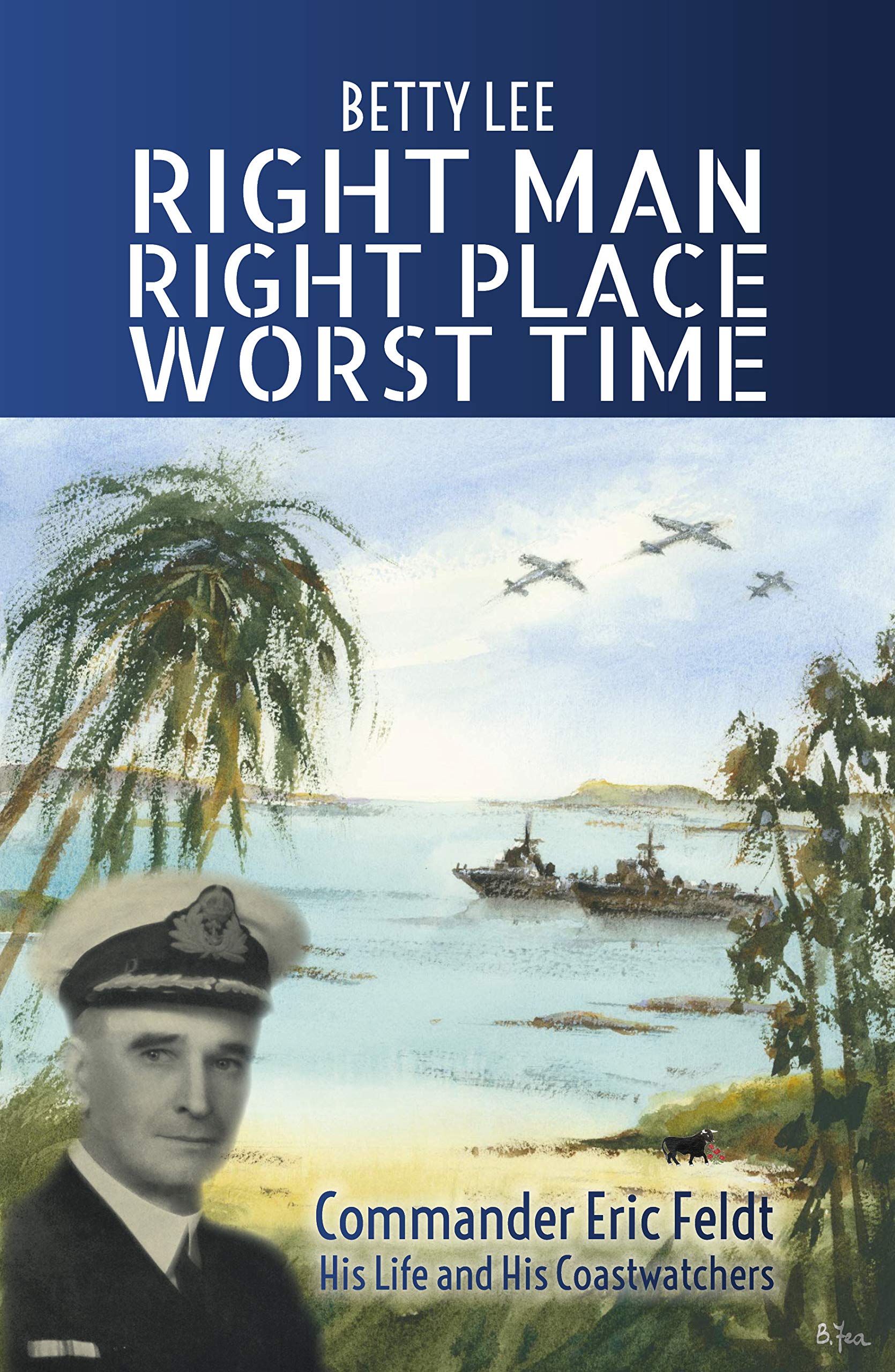This is a biography of an Australian hero of the Pacific War, Commander Eric Augustas Feldt, OBE, RAN. Feldt’s diverse experiences qualified him superbly for the challenge of setting up and maintaining a coast watch service in the critical early period of the Pacific War.

The author is a retired medical practitioner and great niece of her subject. She is well qualified to make observa tions about the effects of health on human performance under pressure. The tragic early loss of Royal Australian Naval College (RANC) classmates from accidents and illness affected Feldt, who suffered indifferent health for most of his life.
Lee’s account makes clear why Feldt was the ‘right man’ when required to step up. He was able to work productively with each Australian military service, government officials, civilian expatriates, locals and United States (U.S.) forces. He used his invaluable contacts with his former RANC classmates and could draw on his skills in small-boat hand ling at crucial times. The author chronicles Feldt’s useful life before and after World War II, completing the story of a great Australian. I feel this volume is comparable to Albert Facey’s autobiography1. Both men endured the same critical events in Australia’s journey. Feldt was a remarkable man who made his own choices.
This biography provides compelling accounts of late 19th century life in tropical Queensland, the involvement of labour from the Pacific Islands in the canefields (blackbirding), the sequel to its abolition (land grants and sugar-cane farms which were too small for economic viability), the excitement of Federation in 1901, the first Officer Cadet class of the new RANC, the life of young midshipmen in Australian and British vessels in the Great War, and the relatively quiet nature the Royal Navy’s activity during its latter part. Feldt left the Royal Australian Navy after World War I, tried a trading venture between Norfolk Island and Australia, and joined the administration of Australia’s protectorate in New Guinea.
Feldt confronted the multiple challenges facing Australian administrators in New Guinea between the wars, in the leadup to World War II, and in the creation and work of the Coastwatcher organisation. There were some 90 coastwatcher posts spread through Australian New Guinea and the Solomons manned by 398 Caucasians and a similar number of local natives, of whom 37 died on operations.
The coastwatchers gave warning of Japanese naval movements and offensive air activity. The warnings allowed the successful defence of Guadalcanal and elsewhere. This highlights the tragedy of the failure of the U.S. radar station on north Oahu to provide warning of the Japanese air attack on Pearl Harbour. Reg Evans, an Australian coastwatcher, arranged the rescue of future U.S. president, John F Kennedy, and the surviving crew of his patrol boat, PT109.
U.S. historian, Walter Lord, says that the coastwatchers were invaluable in warning of enemy activity, rescuing downed airmen and stranded sailors and in helping plan the advance of the allies in the Solomons. Their only common but essential requirement was to know the South Pacific and “the intricate relationships and loyalties that governed life in the islands”2. Senior U.S. Naval officers were fulsome in their praise of Feldt and his team.
The timing of Feldt’s book, The coastwatchers, in 19463, no doubt helped ensure official historians had a credible and comprehensive record of a small force that could easily have been overlooked. Feldt was a master of detail as well as the big picture. The coastwatchers are featured in the official Australian Navy, Army and Air Force histories of the Pacific War – partly because all three services provided members – and in serious studies of Australian military history. For example, Jeffrey Grey refers to “the dedicated and clandestine organisation of Coastwatchers …. set up by Naval Intelligence in the 1920s and which drew upon planters, missionaries and patrol officers”4. The entry on Coast – watchers in the Oxford companion to Australian military history is attributed to Feldt’s book5.
Dr Lee draws comprehensively on Feldt’s book, but that book is focused on the war years and contains nothing of his life before or after World War II. So, her new contributions fill an important gap in the record. Feldt was an austere and modest man who acknowledges his wife for nursing him back to health and putting up with him while he wrote. But he does not mention her name nor any other family. He was appointed an Officer of the Order of the British Empire (OBE) but, arguably, deserved greater recognition. There is a memorial Lighthouse to the coastwatchers at Madang, Papua New Guinea, but nothing in this country. Lee’s call for a memorial in Australia is well justified.
Lee’s book contains many well-captioned photos, useful maps, a bibliography, endnotes and a very helpful index. It is an invaluable record of Feldt’s unique life and the environments he was shaped by and that he helped reshape.
Reviewed for RUSIV by Ken Broadhead.
Contact Royal United Services Institute about this article.






